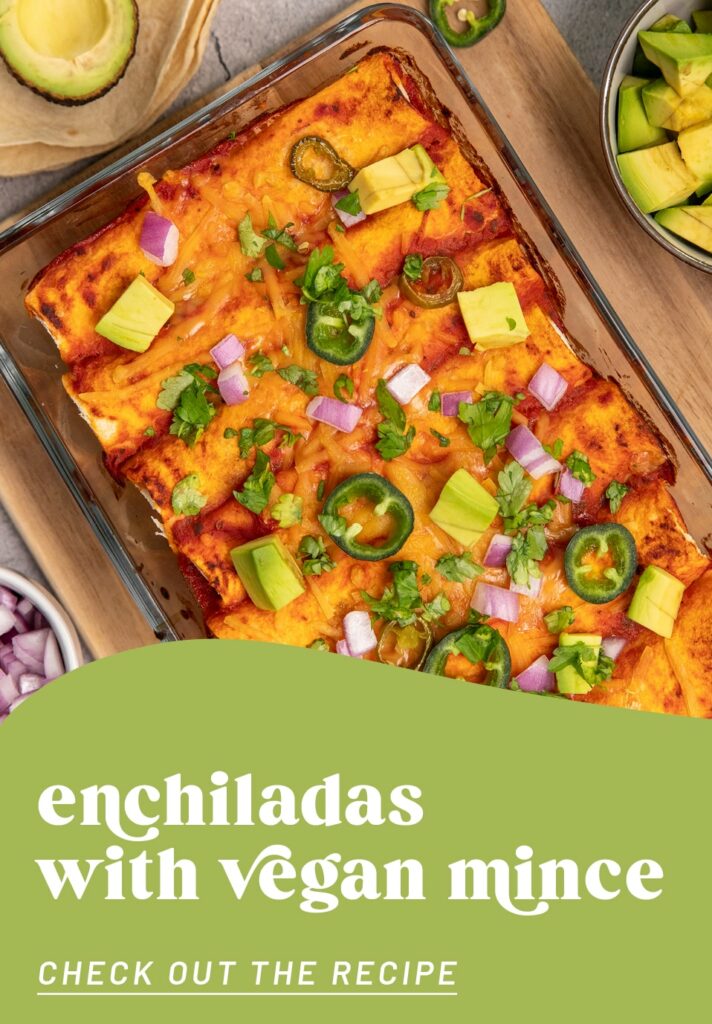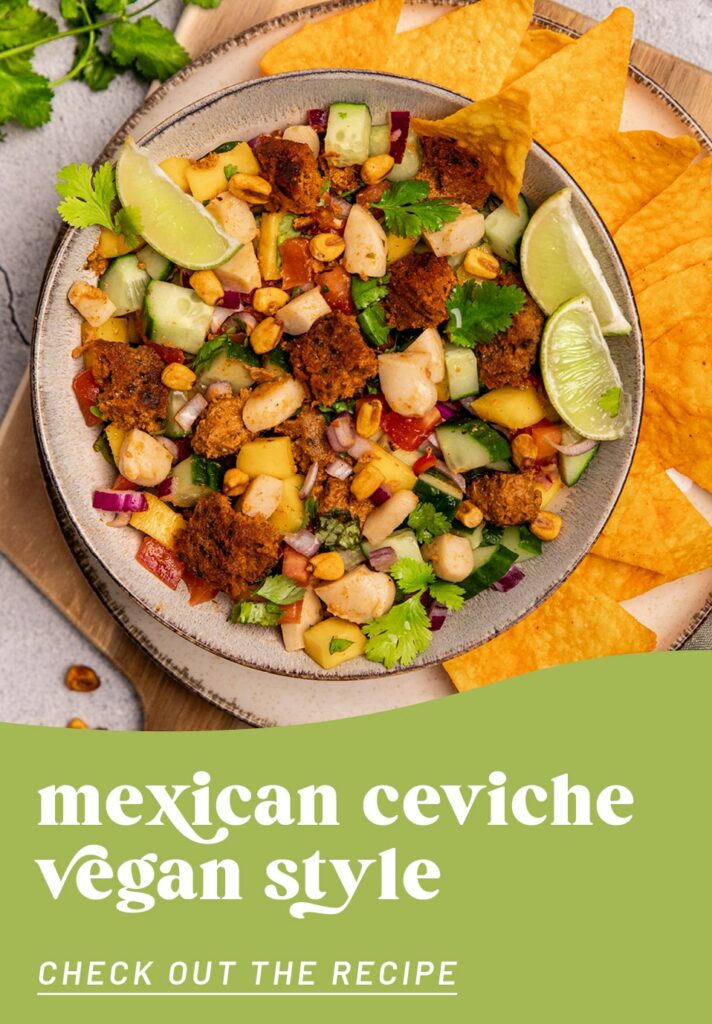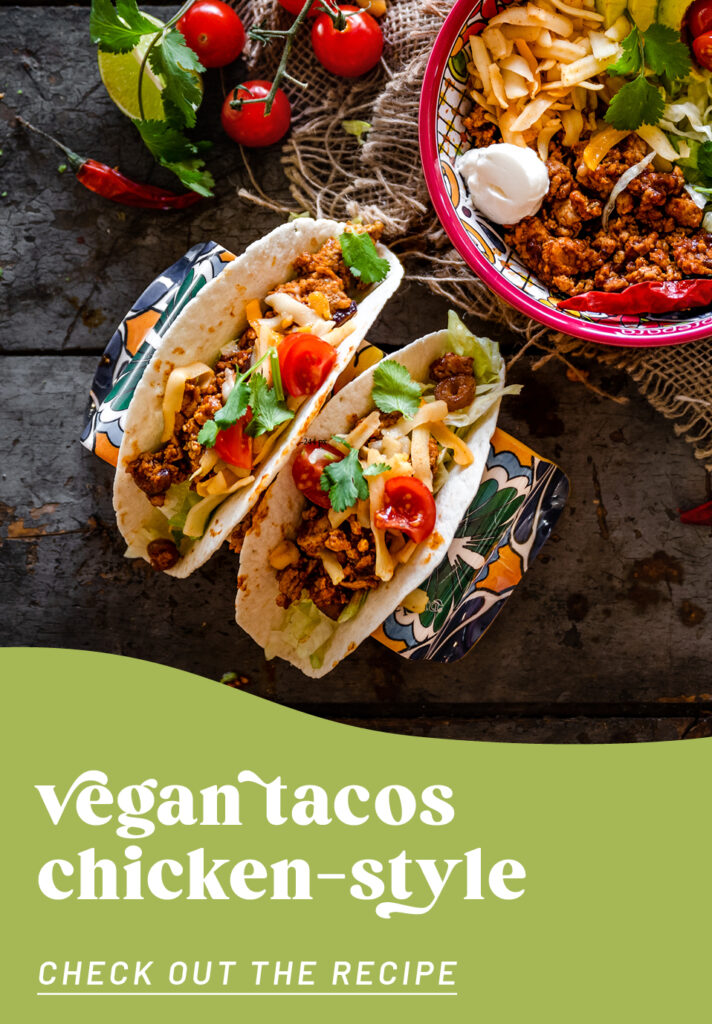VEGAN WORLD TRIP
Hot, hot, hot – Mexico wishes you ¡buen provecho!

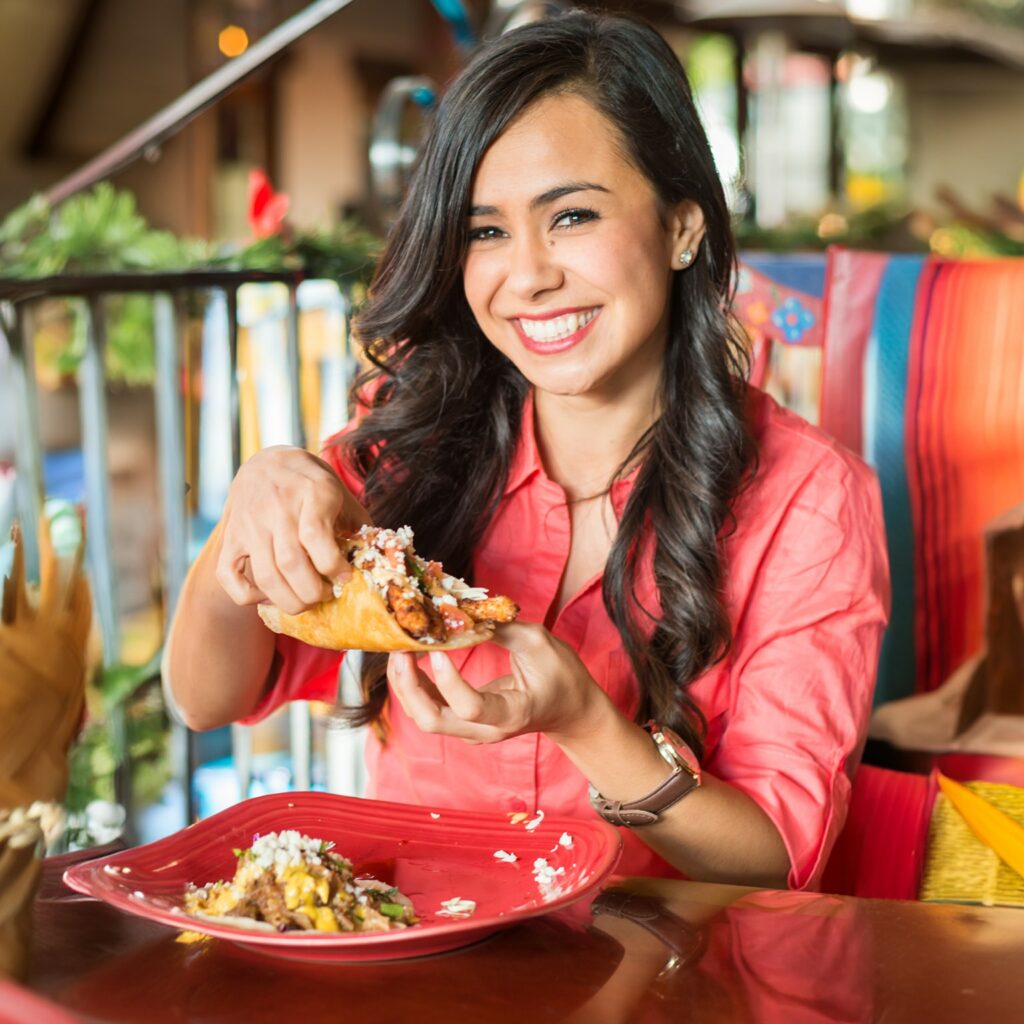
Fancy some tacos, tortillas, tostadas… and more?
Depending on your preference, a vacation to Mexico can mean white beaches, visits to ancient ruins and Mayan temples like Chichén Itzá or Palenque, adventures in the jungle, or exploring vibrant, lively cities. But that’s not all – this country at the juncture between Northern and Central America also has plenty of mountain ranges, semi-deserts and sites bearing witness to the colonial era. You’ll be hard pushed to find another country offering so much variety. And, of course, the culinary highlights are among the top reasons to take a trip to Mexico. Did you know that UNESCO has declared Mexican cuisine part of the world’s intangible cultural heritage, alongside the cuisines of France and Japan?
Mexican cuisine, which is popular here in Europe too, combines native American influences with Spanish ones. Tacos and tortillas, which are so versatile and which are now popular even in Europe, play a huge role. But there are loads more delicious things to discover! We want to show you that one of the keys to the secrets of Mexican cuisine are spicy sauces. Another unusual one is the addition of dark chocolate to savory meals, which comes from the Aztec tradition. Read on to find out how a Mexican menu can offer vegans much more than just tacos or nachos! The great news is that Mexico offers a surprising amount of variety – and that applies to fans of vegan food, too!
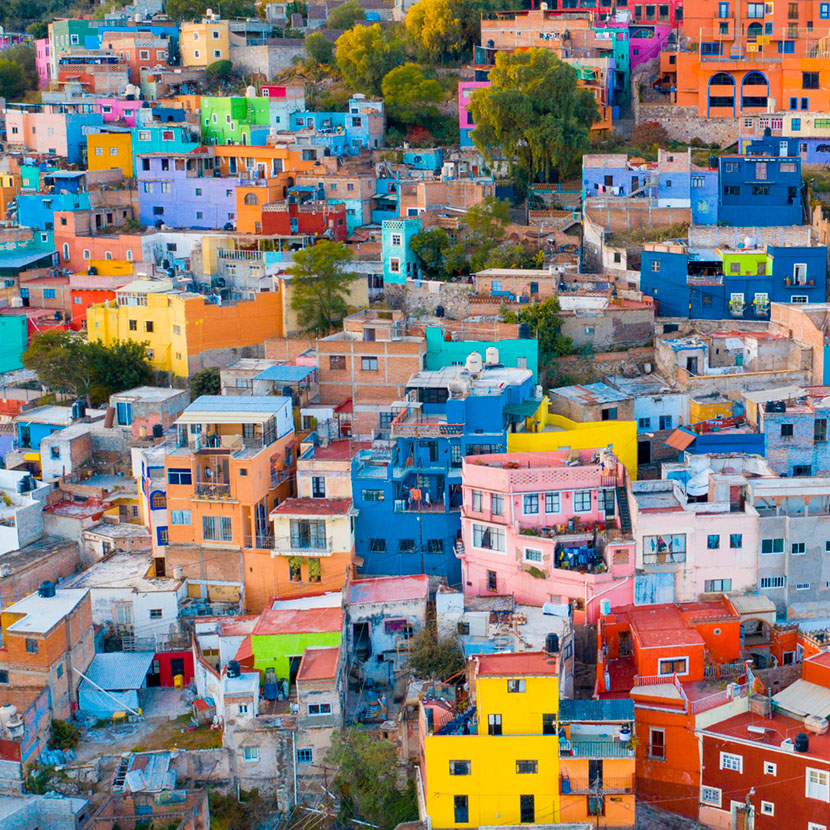
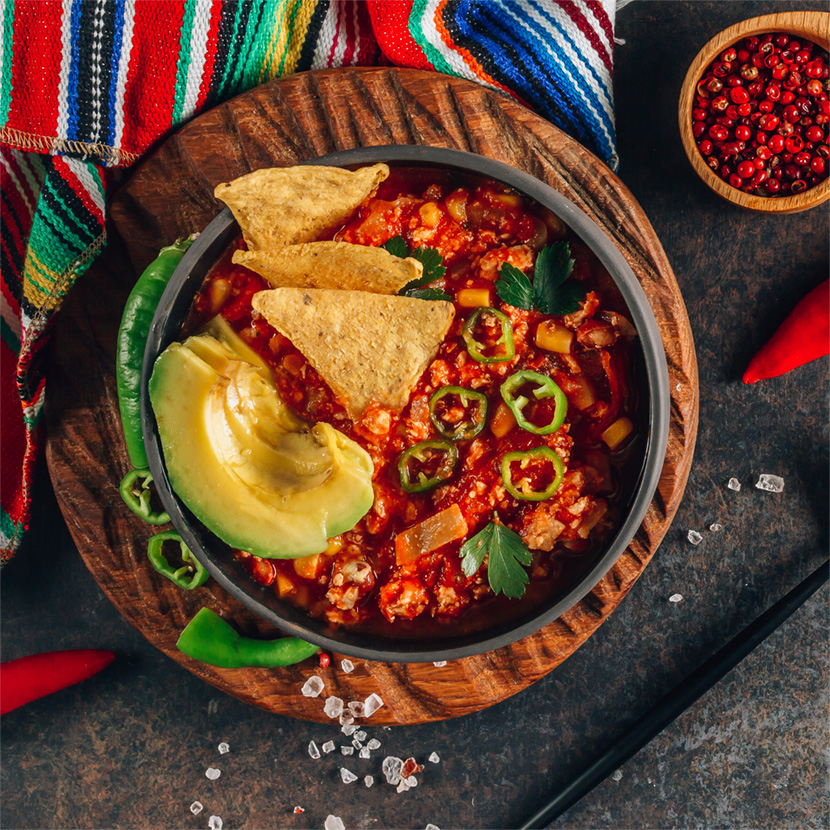
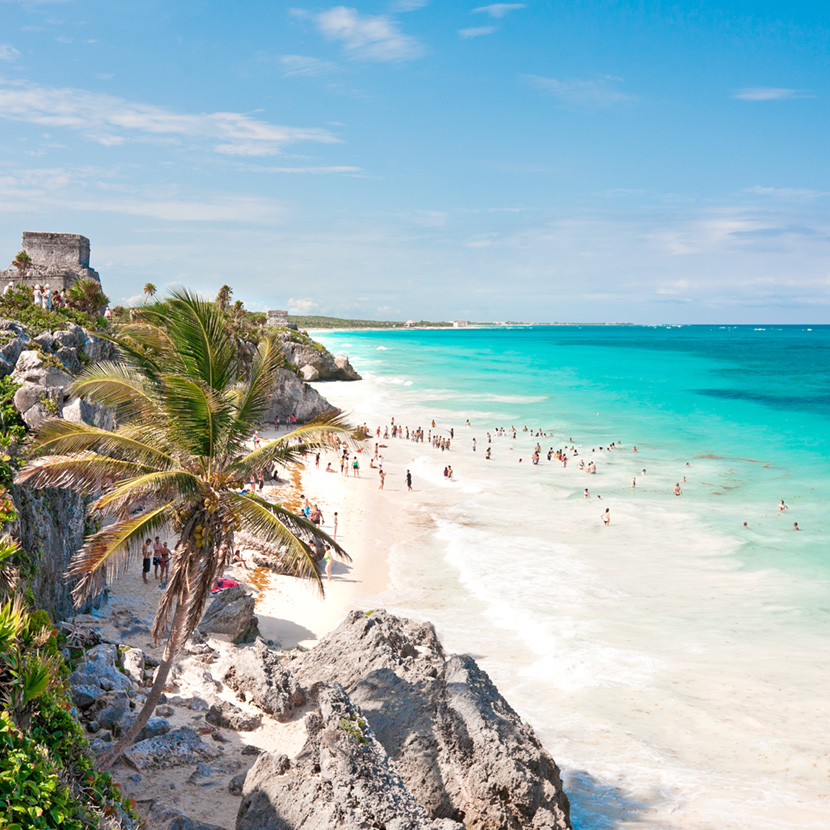
Not to be confused with Tex-Mex!
Talking of nachos – let’s be clear on one thing: traditional Mexican cuisine has nothing, or almost nothing, to do with what we know as Tex-Mex food. As the name suggests, there’s more Texas in Tex-Mex than there is Mexico. The dishes of this fusion cuisine were created as a combination of the Mexican influences in the USA, and include mainly nachos, wraps, burritos, chili con carne (which can also be made vegan, and burgers, often served with plenty of cheddar cheese. Of course, there’s no question that these are all delicious! They’re just not Mexican. While nachos were invented by Mexican waiter Ignacio Anaya García in 1943, it’s worth remembering that this happened close to the Texan border, and that he invented the dishes principally with US soldiers in mind. To make them, he cut tortillas into triangles before deep-frying them. Even today, they’re also known as tortilla chips. In Mexico, they’re known as totopos.
Typically Mexican – of sauces and basic vegan ingredients
So, if Tex-Mex isn’t authentically Mexican, what is? It all starts with the main ingredients, which include: sweetcorn, beans, chili peppers, onions, limes, and when it comes to herbs, it’s often cilantro (coriander). That sounds wonderfully plant-based, wouldn’t you agree? Mexican cuisine therefore offers a large variety of vegan options, even if it often manages to use relatively few main ingredients… What’s more, authentic Mexican dishes bring together Spanish components, indigenous traditions, and even – depending on the region – Caribbean, Arab and Colombian influences. This means that even more creative variations are possible.
Next up are toppings and sauces – your magic spell for authentic Mexican flavor. The main one to mention is guacamole. Its name comes from the Nahuatl word “ahuacamolli”, meaning “avocado sauce”. And that’s exactly what it is. Crushed avocado flesh is mixed with diced tomatoes, lemon juice, cilantro, salt, pepper, and often plenty of garlic. Guacamole tastes great with pretty much anything barbecued, as well as with burgers, chips or fries etc., but also with other spicy sauces such as a jalapeño salsa. Watch out – it’s extremely hot! You might also be interested in trying chipotle sauce (with mayonnaise – which can be made vegan – mustard, lime juice and garlic), the onion and tomato sauce known as pico de gallo, and lemon dips made according to Mexican recipes.
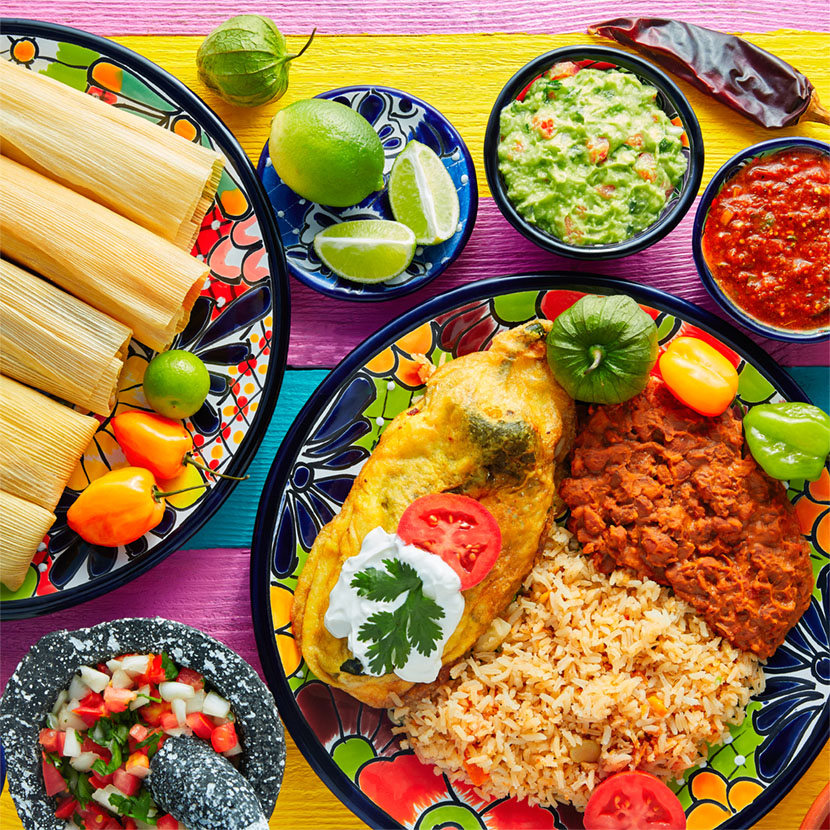
There’s no getting round it: Mexican menus are full of meat and cheese – however, by no means as much as Tex-Mex is! As we’ve seen, the basic ingredients are vegan. What’s more, corn is gluten-free (for anyone who needs to avoid gluten). Great meat substitutes in Mexico include avocado and mushrooms. What’s more, the great variety of fresh vegetables and fruit available in the country makes eating vegan a pleasure. The only drawback is that tap water isn’t suitable for drinking. Remember this when you need to wash the produce you bought from the market.
So much more than just chilis
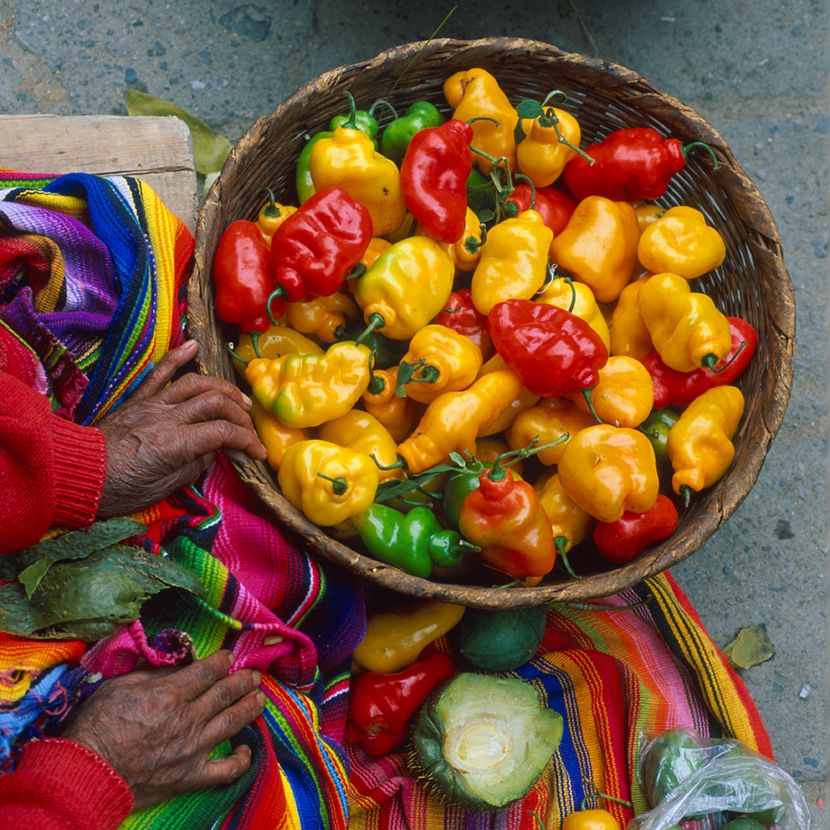
There are an almost endless number of different types of chili that can be used – sometimes with special types being used for particular dishes. What a pity it is that in Europe, we often only use one type of chili. Because the more different chilis you can use, the better you can calibrate your level of spiciness – almost like a dimmer switch!
But in other respects, too:Mexicans love to use seasoning. We read that Mexican cuisine uses 150 different types of herbs and spices to take its dishes to the next level. As we’ve already seen, you can find these in salsas – but also in salads. Alongside heat, you’ll notice fruity, earthy, smoky, and even sweet aromas. Fresh, colorful herbs are very popular too. What’s more, the flavors in savory dishes can be contrasted with those of dark chocolate. This irresistible combination of chocolate and chili in sauce form is known as mole, and it’s served with classic Mexican meat dishes (so why not with meat alternatives?). Anyone trying this for the first time is bound to be astonished by the new ways in which their palate can be tickled – and then more and more delighted! Wanna bet? It’s certainly safe to say that Mexican cuisine is always a firework of flavors!
Eating vegan in Mexico City
This vibrant city is a real melting pot. In this huge metropolis, tradition and innovation exist side by side and with each other in the most beautiful ways. You might notice this in terms of architecture: modern designs can be found juxtaposed with residential blocks and magnificent colonial palaces. Flashing neon advertisements alongside trendy, minimalistic pubs and colorful, loud markets. Which brings us back to the topic of food, of course.
Because in Mexico City, street food is available wherever you look. You could even go on a proper street food tour for tourists. There are even tours especially for vegetarians and vegans: just google them! Going shopping at the numerous different markets is great fun, too. You’ll find milk alternatives in small vegetarian shops, or in supermarkets.
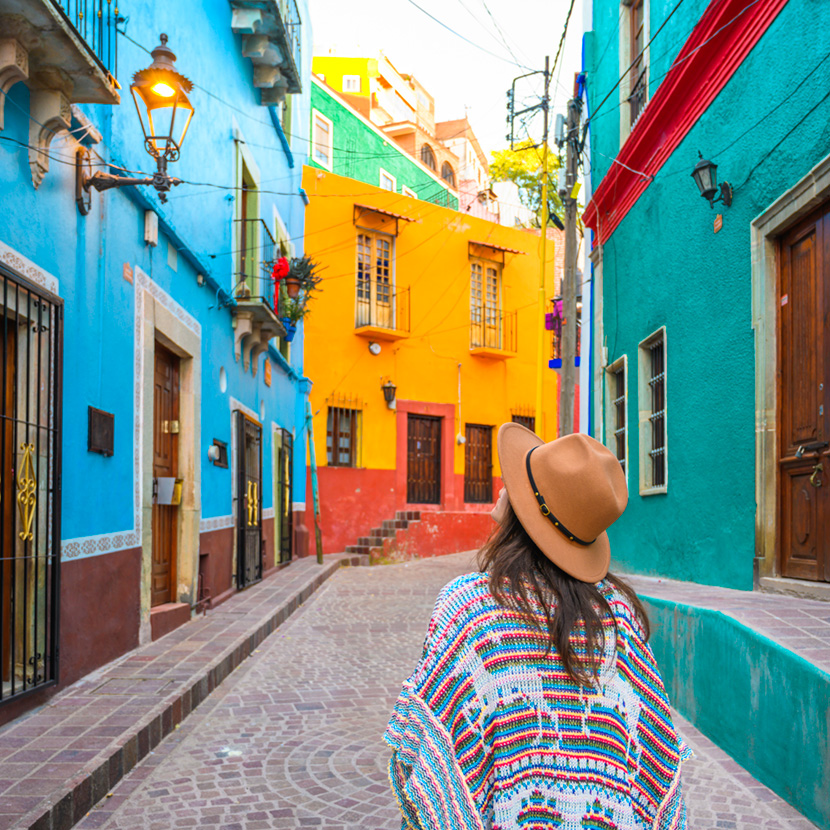
Here are our top 7 restaurant recommendations for your visit to the Mexican capital:
- Vegamo, situatedin the historical center of Mexico City.Alongside Mexican food, you’ll also find international “comfort food” such as red and green chilaquiles (a classic breakfast which was originally made from leftovers), vegan corndogs, enchiladas, BBQ burritos with breaded cauliflower, sandwiches, and much much more! One dish known for being particularly “instagrammable” is “Chewbacca” – a sandwich made from two spinach and avocado waffles and filled with soy ham substitute, mushroom ragout and basil pesto.
- La Pitahaya Vegana
Laura Cárdenas and Guillermo García started selling vegan food from a VW beetle in 2015. They were soon successful at many markets, meaning they now have a permanent site where they sell their colorful, fresh, fairtrade meals. - Por Siempre Vegana Taquerí: Por Siempre is a year older than La Pitahaya Vegana. It has existed as a takeaway in the Roma Norte quarter since 2014. It’s a great place for fans of vegan food to have on their radars.
- Na Tlali in San Ángel (avenida de la Paz) serves vegan Mexican food inspired by the traditions of the regions Oaxaqueña and Veracruzana. The emphasis is on sustainability, regional and seasonal produce, and mindfulness. One of the ways this is expressed is through the use of fresh herbs, such as “pápalo” or “hoja santa” – which are unfamiliar to us – and seasonal dishes with zucchini blossoms. The restaurant also has a small shop.
- Mexico City isalso home to Asian restaurants such as Plantasia. You can expect to find very interesting fusion cuisine with influences from Japan, Indonesia and Thailand.
- Los Looser established in 2011, is one of the city’s vegan pioneers. Chef de cuisine Mariana Blanco’s veganized Mexican dishes made from plants and mushrooms are joined by Korean and Japanese influences, because she loves Asia as much as she loves animals. Her short but sweet motto is: “Food is light”.
- Forever Vegano is perhaps the most famous vegan restaurant in Mexico City. This is likely thanks to its extensive menu, and its excellent location in a beautiful art nouveau style villa in Roma Norte. You can look forward to creative compositions such as “faux tuna tostadas” with watermelon sashimi. But the restaurant’s chicken alternatives and waffle creations are also well-known in the local vegan food scene.
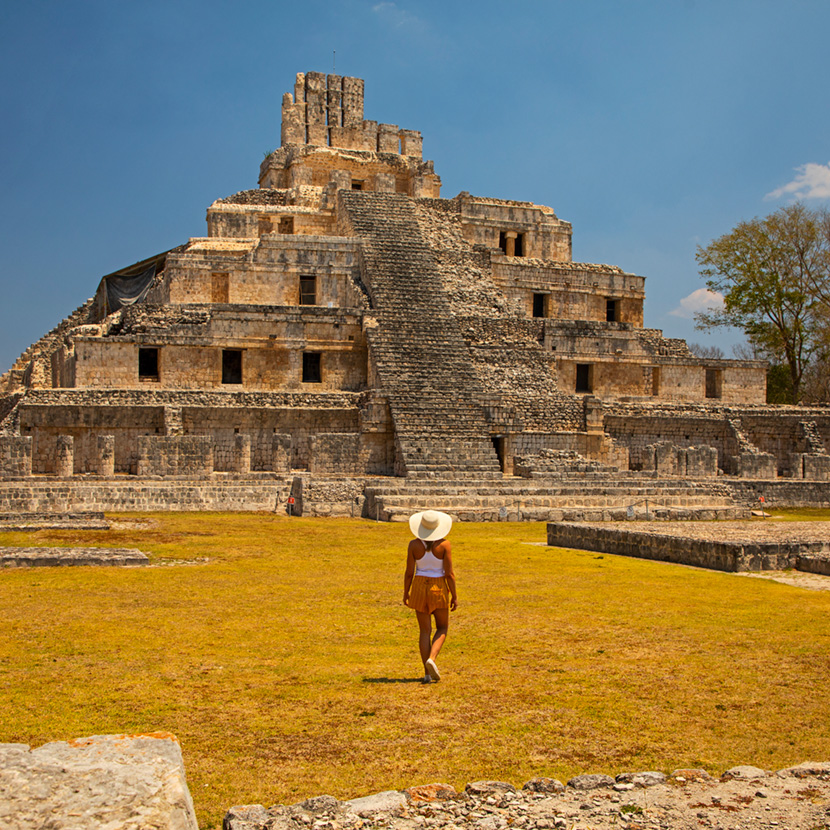
Yucatán – the magic of Mayan culture and cuisine
The Yucatán peninsula in the southeast of the country offers optimal conditions for a dream holiday, and is very popular with tourists: beaches lined with palm trees in Cancún (Riviera Maya), Bacalar Lagoon, Playa del Carmen, great diving spots like the Cenotes (limestone caves filled with freshwater, which were once Mayan holy sites) and the turtles at Akumal attract tourists, just as the Isla de Mujeres island paradise does, the coral reefs at Isla Cozumel, the flamingos at Rio Lagartos, tropical rainforest in the far southeast, or fascinating steppe landscapes in the northwest. These natural treasures encourage us to practise particularly mindful tourism. One tourist magnet are the ruins of the Mayan culture: the step pyramids of Chichén Itzá, the ruins at Tulum (as well as beautiful beaches), Uxmal, Coba, Edzná etc. The towns of Mérida, Valladolid and Campeche are also worth visiting.
After all those activities and visits, you’re bound to be hungry again… and it has to be said that the Yucatán peninsula really does cater for tourists, so what’s on offer gastronomically is suited to what tourists want.
This is a huge advantage for those on plant-based diets. You’ll often find vegan alternatives on the menu. Some of the restaurants we’d like to highlight include La Hoja Verde in Tulum, and Palmaïa. You’ll also find the classic cuisine of Yucatán, though. One recipe worth mentioning is the Mayan dish „Cochinita Pibil“ with recado rojo – red sauce. It’s traditionally made with pork cooked in underground earth ovens. By the way, the spiciest chili there is, the habanera, comes from the Yucatán peninsula. But watch out, it’s rather fiery!
¡arriba! Off we go to more (culinary) highlights
Mexico has plenty of destinations for every taste – even outside of the capital. Beaches on the coasts of the Pacific and the Gulf of Mexico, as well as exciting mountain regions, wonderful coastal resorts, and lively cities…
Oaxaca: We already mentioned this region when talking about restaurants in Mexico City. The state of Oaxaca is situated to the southeast of Mexico City, and is crossed by three mountain ranges. The state’s capital (Oaxaca de Juárez) is situated at 1500m altitude in a high valley in Sierra Madre del Sur. The variety of landscapes and plants to be found in this area are fascinating, as are the many indigenous groups. Other attractions include beaches, and archaeological sites such as the ruins of Monte Albán. Oaxaca is famous for its markets.
The undisputed top culinary specialty in Oaxaca is mole. It’s a thick sauce made from chilis (what else?!) and, depending on the recipe, up to 50 other ingredients. The key ingredient is dark chocolate. Mole plays a big role in the Mexican national dish, Mole Poblano – which features turkey or chicken slathered in this dark chocolate sauce, which really is something. Last but not least, Oaxaca is the home of the Mexican national drink mezcal, made from distilled agave. It could be described as the cousin of tequila.
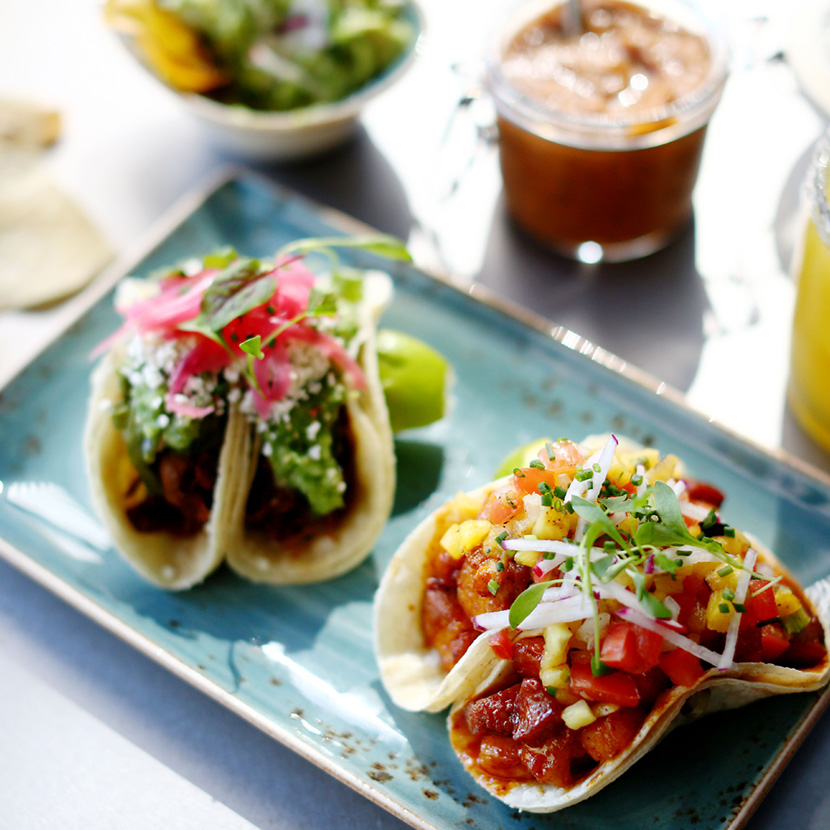
Baja California: This Mexican state borders the USA and extends out over the peninsula towards the south. The region’s proximity to the United States means it’s home to a mixture of culinary influences. This is where Tex-Mex cuisine, which we’ve already mentioned, has its origins. On a typical menu in cities like Tijuana, Mexicali or Ensenada, you’ll find Mexican dishes alongside Caesar salad, chili con/sin carne, pizza, grilled lobster, and so-called Tijuana tacos – which are special because the corn tortilla is cone-shaped, making it easier to fill with the delicious meat filling – or a plant-based filling of avocado and spicy chili sauce. And have you ever heard of chimichangas? No, it isn’t a new style of music. They’re deep-fried burritos. Finding vegan versions is something of an art, however…
We’d also like to mention the city of Puerto Vallarta (in the state of Jalisco) – one of Mexico’s most popular travel destinations. And, every November, Puerto Vallarta is where the “Festival Gourmet International” takes place. Reports by vegan travelers all agree that outside of Mexico City, it’s not quite as easy to follow a vegan lifestyle. Nearly everywhere, however, you’ll be able to find a quesadilla without cheese (“sin queso”) or vegetable tortillas (“sin carne”). And another cause for optimism is that the vegan community in Mexico is growing.
Our top 10 “cocina mexicana” dishes
1. The four Ts are omnipresent:
The four Ts are omnipresent: Tacos, tortillas, tostadas and tlayudas. The latter is a large, toasted tortilla with bean paste and dried meat or cheese. You certainly don’t have to go for „Tacos al Pastor“ (with marinated pork) or „Tacos de Res“ (with beef). We’ve put together a really yummy plant-based variation on tacos for you, featuring an alternative to chicken. To make this tostada, the crispy tortilla is spread with garlic and tomatoes. Really delicious dipped in olive oil! Add other fillings such as deep-fried zucchini or mushrooms to make some sophisticated finger food!
2. Enchiladas
are a real favorite of Mexican cuisine: filled, soft tortillas made from maize flour, which have different fillings depending on the region they’re from, and are then dipped in chili sauce, baked in the oven and drizzled with various sauces (bean paste, salsa verde etc.) – which can even include the sweet, spicy sauce mole. Our version is delicious with its filling of vegan mince and jalapeños. The sauce is tomatoey, spicy and peppery. Yum!
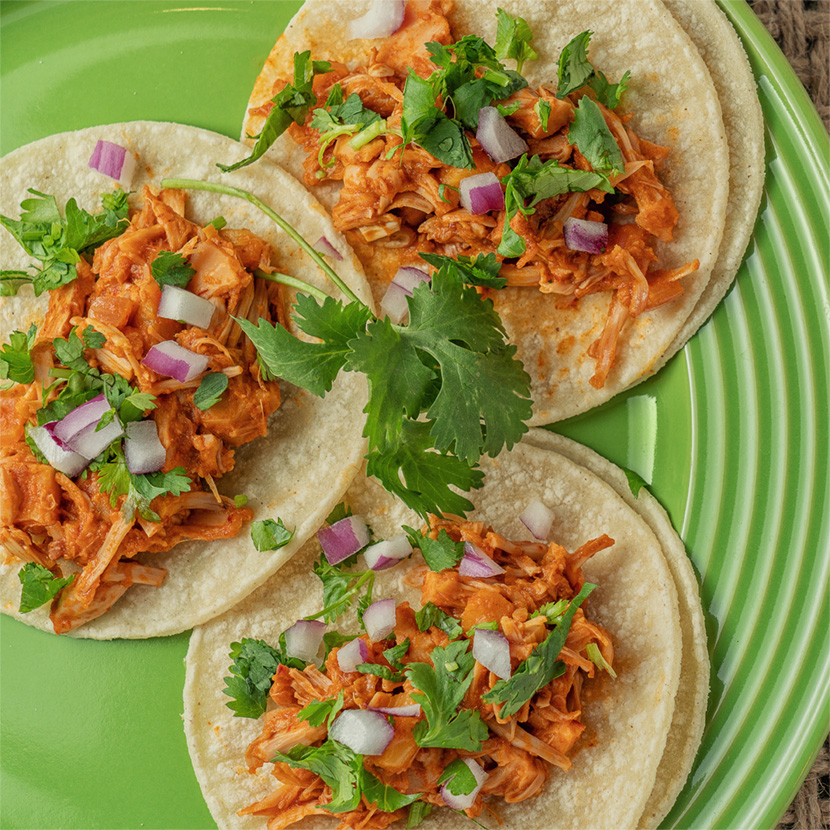
3. Ceviche:
The name of this dish is thought to come from the Quechuan word “siwichi”, meaning “fresh fish”. In the original recipe, the fish was chopped finely and marinated in a mixture of lime, chili, onions and salt. Other seafood is often used too. Ceviche is particularly well-known in Peru and Ecuador, but actually all over Latin America. We’ve created a great vegan version which showcases our alternatives to shrimp and fish fillets.
4. Mole:
As we found out earlier, this sauce is made from a base of bitter chocolate and chilis, and is a must for fans of exotic food. Mole can also feature other ingredients or spices such as cinnamon, aniseed, cloves, nuts or onions. It is often used as a base for stews, or as a filling. We recommend ordering mole with potatoes or vegetables.
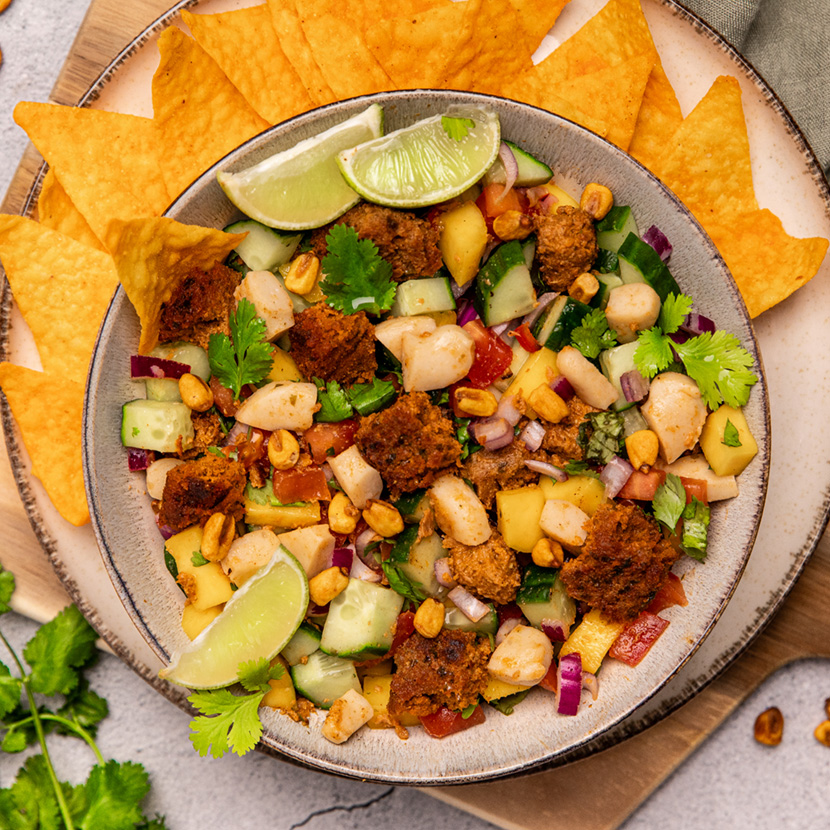
5. Tamale
is pretty much the national dish of Mexico, with roots in the Mayan and Aztec cultures. The steamed packages, which are wrapped in banana leaves, look pretty and are often available as street food. The filling is made from a maize dough with meat or vegetables. It’s worth asking for the vegan version (“sin carne”).
6. Chiles Rellenos
are stuffed, breaded peppers. This specialty was invented in the 19th century in the city of Puebla. In addition to meat and cheese, the classic fillings feature raisins and cinnamon. The peppers are then rolled in beaten egg and flour before being fried and served with tomato sauce. We’re sure that veganizing this dish would make for an enjoyable challenge! By the way: Chiles en Nogada is a seasonal variation on the dish which is only available during the pomegranate and walnut season from August to September. Why not try integrating it into your meal plan once or twice?
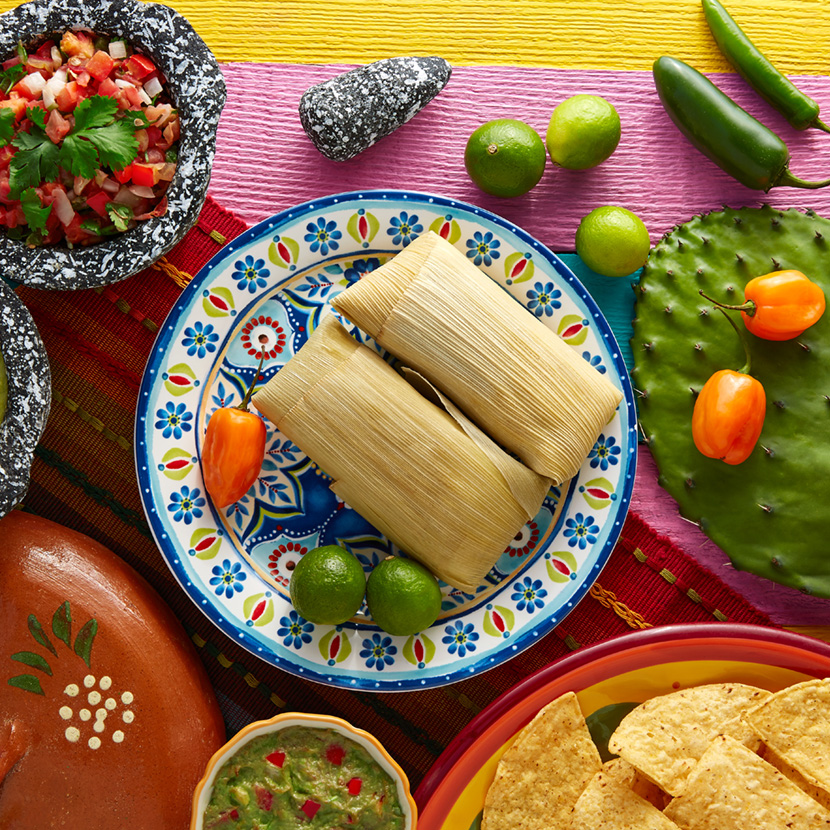
7. Chilaquiles:
consists of deep-fried corn tortillas simmered in a sauce which can be either red or green – but is always spicy. They can be served with crumbled fresh cheese, sliced raw onions, and a generous sprinkling of cilantro. Mexicans eat this hearty specialty for… breakfast! Fans of vegan food can try the dish without the cheese!
8. Torta Ahogada:
You’ve guessed it: yet again, we have a dish that involves dipping in a spicy sauce!This sandwich, which is fluffy on the inside and crispy on the outside, takes a bath in a salsa of vinegar, cumin and – who would have thought it (?!) – chili and pepper. To veganize the dish, you’ll need to leave the pork out of the filling. It also tastes great filled with nothing but bean paste and onions. It’s said that the locals eat torta ahogada as a cure-all for colds, or even hangovers!
9. Nieves:
We’ve finally reached the dessert menu, and that means: nieves. This frozen treat is similar to ice cream but uses water as a base instead of cream or milk, making it wonderfully vegan! Once again, each region has different flavors to offer: from classic lemon or coconut to exotic red prickly pears, or even a variation made from mezcal – why not try them all?
10. Desserts & chocolate:
In addition to nieves and ice cream, there are plenty of other delicious Mexican desserts you might encounter. These include mango cream, caramelized oranges, bananas prepared in various ways, churros, and even tacos with sweet fillings. Let’s not forget that the Olmecs and Aztecs of Mexico invented chocolate at least 4000 years ago. This started out with cacao (“cacahuatl”) being used as a drink at holy ceremonies. Nowadays, we love it in the form of hot chocolate or as dark chocolate in vegan sweets. If you like your drinks to be more refreshing, you should try raspados with pineapple syrup, fresh fruits and crushed or shaved ice.
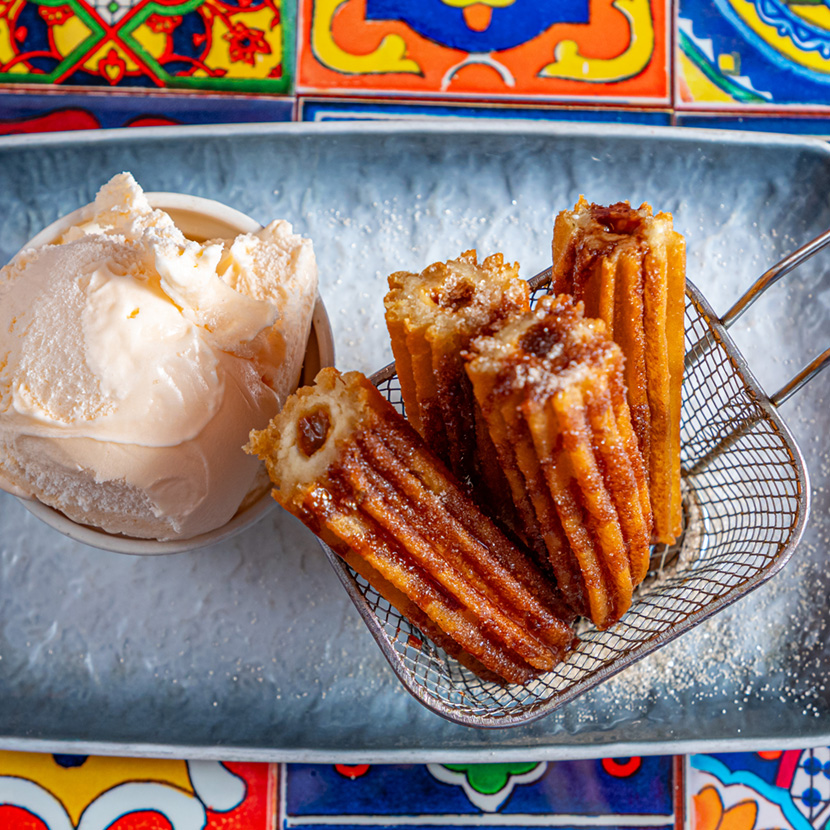
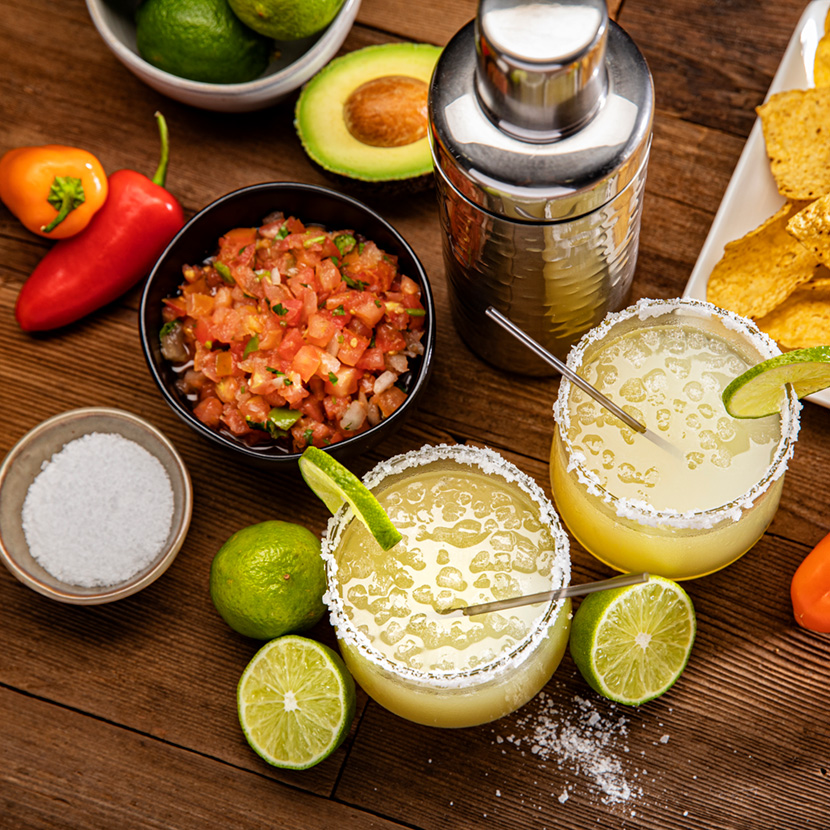
Celebrating special occasions – and street food
Alongside our top 10 vegan or veganizable recipes, Mexico has plenty of other plant-based dishes to offer, including tomato rice, sweetcorn salad (make sure you ask for it without the cheese), roasted corn on the cob, Mexican style potato salad, kidney bean salad etc. We’re interested to know what you discover in diverse Mexico!
One thing’s for sure: In Mexico, food brings people together. People love cooking together. And celebrating together. And many celebrations are all about the relevant culinary specialties. No Mexican celebration would be complete without moles and tamales. Mexico is also heaven for street food fans. According to unofficial rankings, Mexico is in the top 3 countries in the world for street food. As we’ve already mentioned, you can book street food, taco or market tours in Mexico City – but also in cities such as Cancún and Oaxaca. And when you’re on tours like these, you often end up talking to people! Life in Mexico is sociable, fiery, colorful and … ¡muy rico! – simply delicious!
¡buen provecho! – 3 Mexican recipes to suit different tastes
Mexican cuisine makes it easy to eat yummy vegan food – that is to say, “sin carne, sin huevos, sin leche y sin queso” (free from meat, eggs, milk and cheese). There are even Mexican vegan cookbooks! Why not try out one of our 3 specialties right away?!
